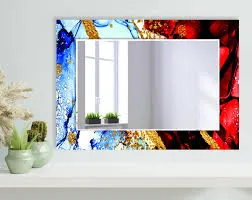

Types of Reflective Glass An Overview
Reflective glass, renowned for its unique ability to enhance aesthetic appeal while providing energy efficiency, has become a vital component in modern architecture and design. This type of glass is distinguished by its reflective coating, which allows it to reflect a significant portion of solar radiation while maintaining visibility from the interior. Understanding the various types of reflective glass can help architects, builders, and homeowners make informed decisions based on their specific needs and preferences.
1. Low-Emissivity (Low-E) Glass
One of the most common types of reflective glass is Low-E glass. This type features a microscopic metallic coating that reflects heat while allowing natural light to enter. Low-E glass is designed primarily to improve energy efficiency by minimizing heat loss in winter and reducing heat gain in summer. By selecting Low-E glass, buildings can reduce their energy consumption significantly, leading to lower heating and cooling costs. Additionally, this type of glass helps in blocking harmful UV rays, protecting interior furnishings from fading.
Tinted reflective glass is another popular choice for commercial and residential buildings. This glass is infused with pigments during manufacturing, resulting in various shades ranging from light bronze to dark green. Tinted glass reduces glare and improves comfort by filtering excessive sunlight, making indoor environments more enjoyable. Moreover, it provides a level of privacy, as it limits visibility from the outside while still allowing light to permeate. Tinted reflective glass is particularly favored in hot climates where solar heat gain must be controlled.
3. Mirrored Glass

Mirrored glass, often used in high-rise buildings and facades, offers a striking aesthetic appeal. This type of glass has a reflective coating on one side, resulting in a highly reflective surface that acts like a mirror. Mirrored glass not only enhances the visual attractiveness of a building but also provides excellent privacy during the day, as it prevents people from seeing inside. However, at night, visibility inside is possible when interior lights are on, so it is essential to consider its placement and use carefully.
4. Vented Reflective Glass
Vented reflective glass is a specialized type that incorporates ventilation features to improve thermal performance. This glass typically possesses a layer of air or gas between the reflective coating and the glass surface, facilitating airflow and temperature regulation. By allowing for heat dissipation, vented reflective glass can enhance comfort levels within a building, making it suitable for specific climate conditions and architectural requirements.
5. Specialty Reflective Glass
Beyond mainstream types, there are specialty reflective glasses designed for specific applications. For instance, acoustic reflective glass incorporates sound-dampening properties, making it ideal for locations needing noise reduction, like urban environments. Similarly, fire-resistant reflective glass allows for the safe and efficient use of reflective technologies in high-risk areas.
In conclusion, reflective glass is a versatile and functional material that enhances building aesthetics and energy efficiency. By understanding the different types of reflective glass available, stakeholders can select the appropriate options that align with their design goals, environmental considerations, and performance requirements. Whether for commercial skyscrapers or residential homes, the right choice of reflective glass can significantly impact both the functionality and visual appeal of any structure.